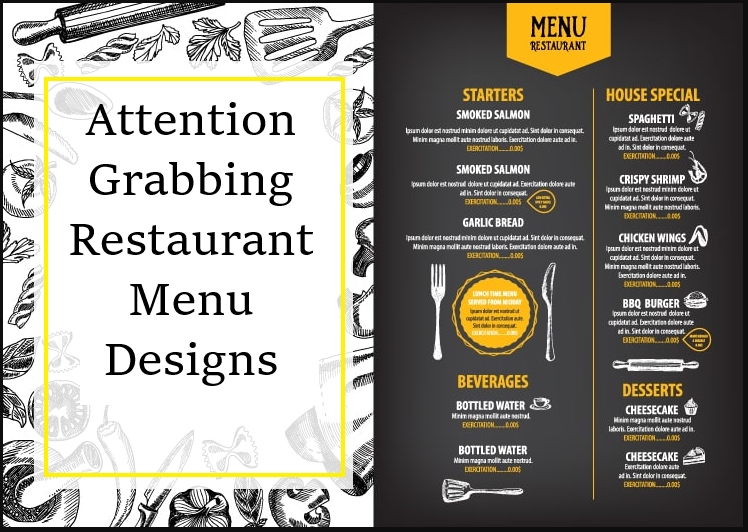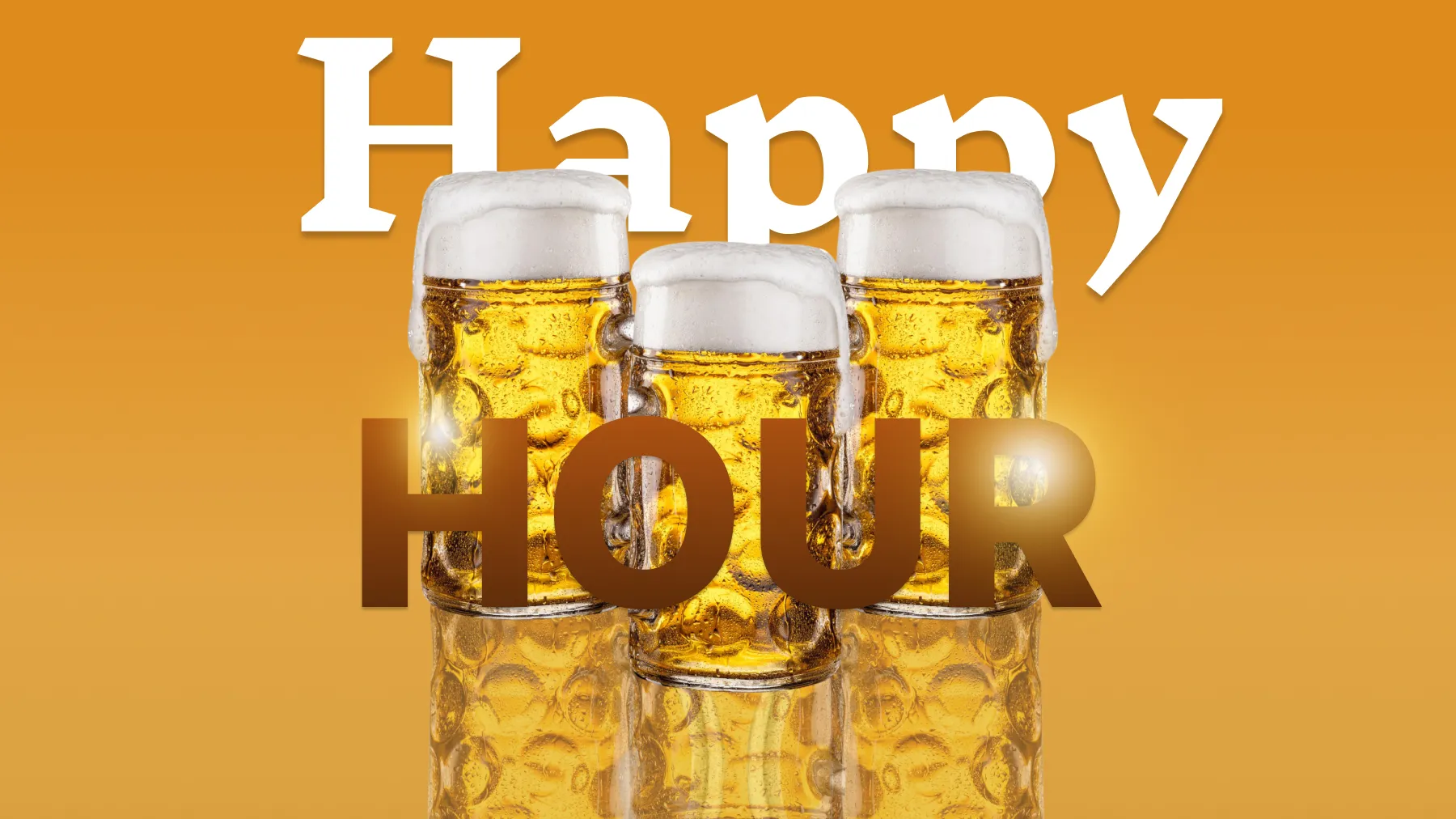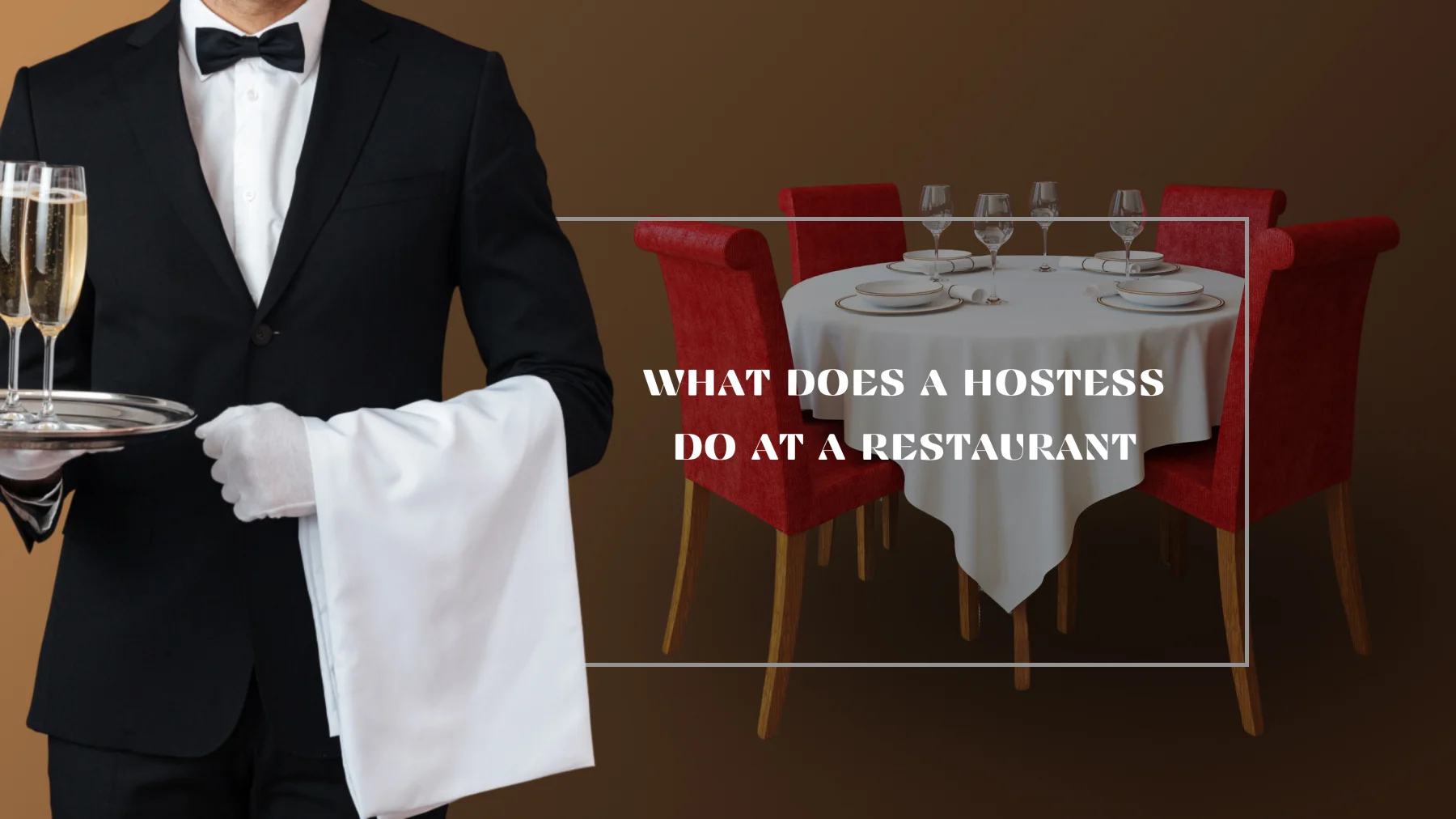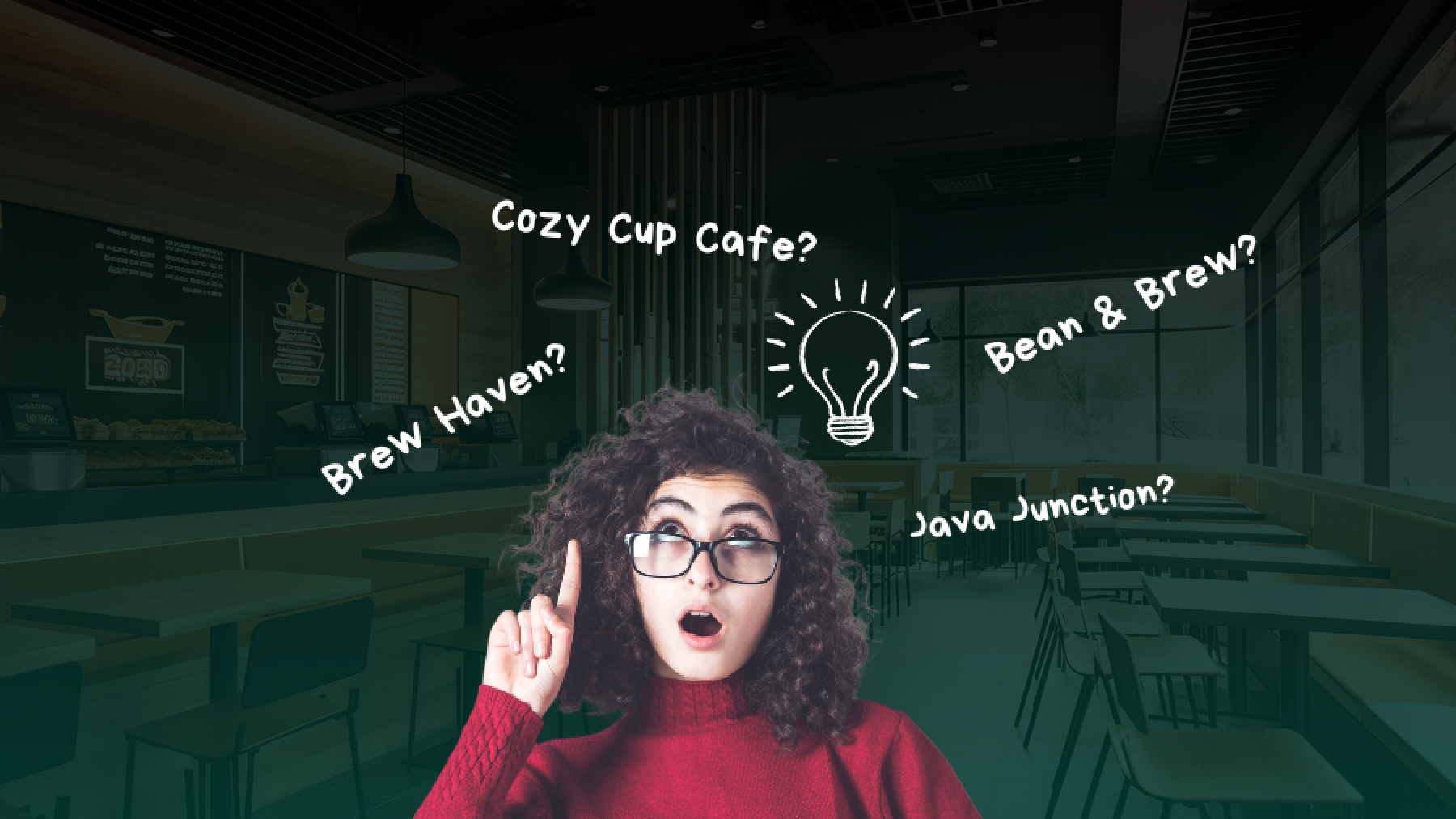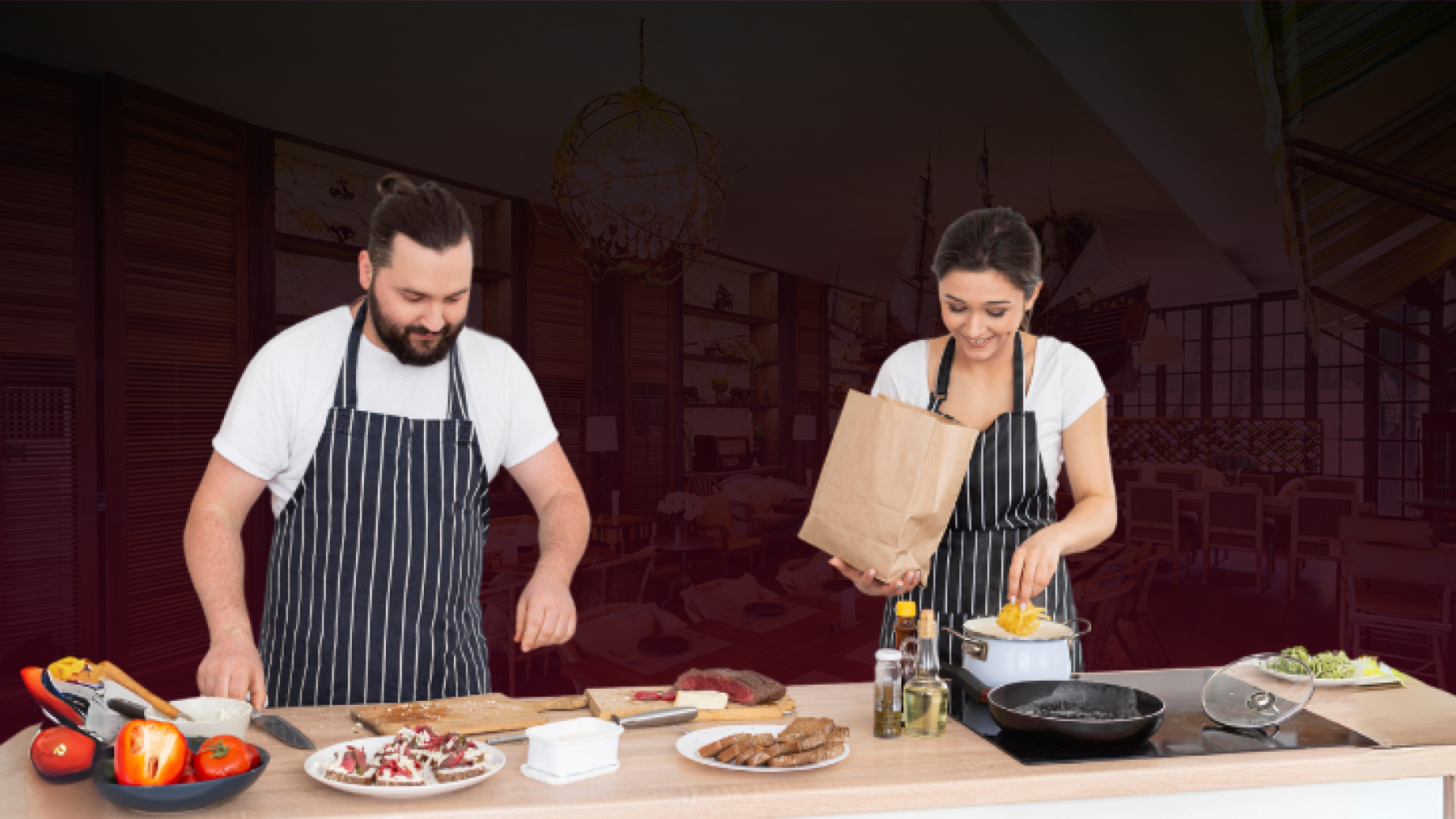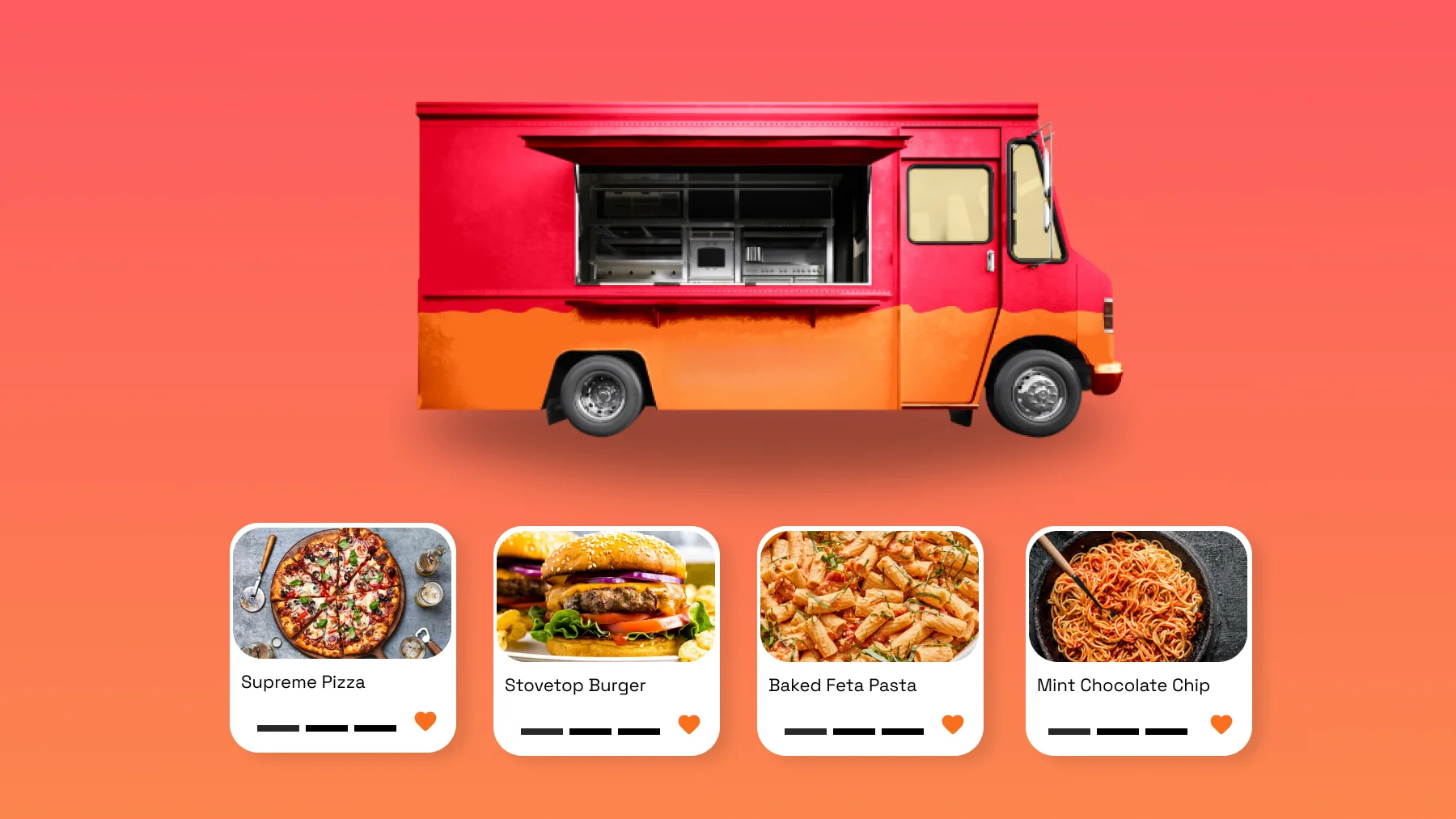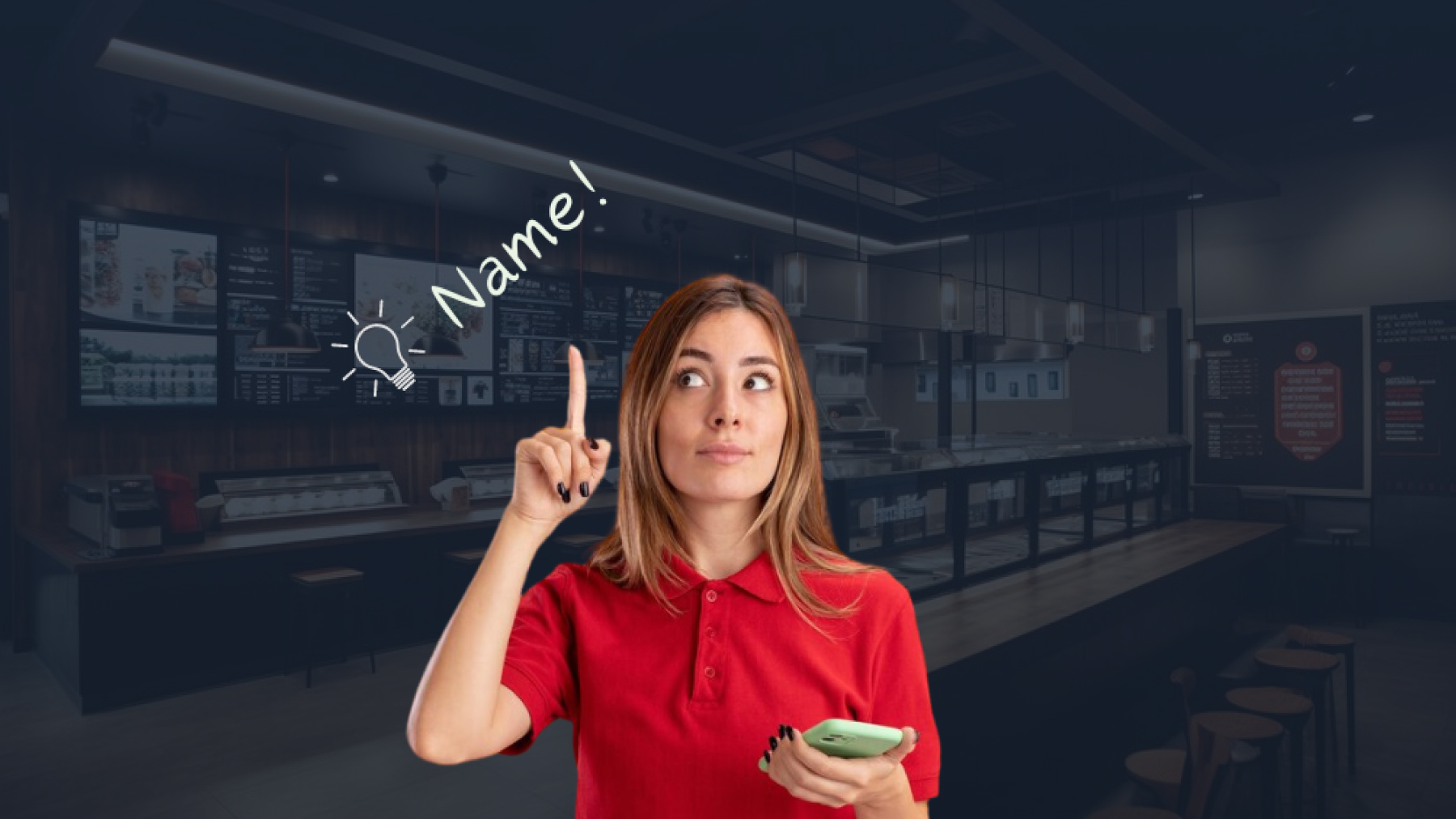Attention Grabbing Restaurant Menu Designs
It is no wonder that a dynamic menu attracts the guest’s attention in no time. Restaurant menu cards essentially need to be attractive and also filled with unique and creative culinary offerings, making the food experience memorable.
While most restaurants concentrate on the design of hand-held menus, they overlook the one on the restaurant website. Restaurateurs must build their own restaurant website and also upload search engine friendly menus so that prospective customers reach you in no time.
This blog will take you on a tour of restaurant menu designs that inspire you to be a step ahead.
What Is Restaurant Menu Design?
An ideal restaurant menu design is a perfect reflection of the outlet’s personality, all the culinary offerings and the way one’s own restaurant is unique when compared to others. When it is done right, keeping the brand fresh in the customer’s mind is extremely easy.
An aesthetically designed and functional restaurant menu possesses the power of increasing business profitability and establishing a brand value.
Why Is Menu Design Important? Its Functions
A perfect restaurant menu design is pivotal to any restaurant’s marketing plan.
The functions of a restaurant menu design are:
- Expresses the eatery’s personality.
- Lends focus to the overall operations.
- Promotes profitability.
- Establishes the business budget.
- Ensures brand recognition and instant recall.
How a Well Designed Menu Works in Your Favor:
Drives Traffic – A custom designed menu will enhance the brand
Grow Sales – A well-designed menu has the power to drive sales through profitable items
Brand Solidification – The usage of a similar style on multiple menus and marketing pieces can create a brand that is consistent.
Tips to Use While Designing a Restaurant Menu
i) Best Usage of the Prime Sweet Spots:
These spots refer to areas towards which the eyes of the average diner move first. Since they are the spots receiving the first attention, the restaurant must place the best selling items or the ones that they wish to have the biggest draw.
While the upper righthand corner of the menu has remained the sweet spot for several years, new research suggests that diners or guests tend to read restaurant menus like a book – beginning to peruse it from the top left corner.
ii) Use Columns to Arrange Items:
While designing a menu, restaurants must use columns to arrange items based on the type of cuisine served and the image that the restaurant wants to create in the minds of customers. While a single column gives a sense of sophistication and elegance, two columns lend a sense of playfulness and so on.
iii) Use Boxes to Highlight:
Signature items must be highlighted using boxes so that they draw instant attention. Just like the usage of boxes, the inclusion of colors, images, labels and logos also works really well for the restaurant. Restaurants can also name items specifically or even creatively to induce the customers to give it a try.
Restaurants can try making use of illustrations instead of photography as they are universally more intense and appealing. They also help to distinctly communicate a brand’s personality.
iv) Use Active Descriptions:
If you wish to encourage diners to make future visits, use active descriptions of the ingredients used to prepare the dish. The food must sound really enticing and exotic for the guest. This will make them make frequent visits, place huge orders and also choose that specific dish every time.
v) Bid Adieu To Currency Signs:
Customers must never be made overly aware of how much they are about to spend while dining out. Researches have highlighted the fact that customers are more likely to spend more amounts only when currency symbols are completely omitted on the menu.
vi) Use Effective Typography:
Typography provides legibility while also communicating a restaurant’s brand. The selection of typeface must be done keeping several practical factors in mind like the amount of text needed to comfortably fit into a single page without cluttering it.
Using more than one typeface is advisable, primarily to guide diners in distinguishing between the names and descriptions of menu items.
Menu Types That Restaurateurs Need to Know:
Restaurateurs must understand the differences between them in order to select the most appropriate menu for their restaurant. Restaurants that strategically plan their menu formats can generate more revenue and also please their customers with distinct and navigable selections.
Modern restaurant menus fall into the following basic categories.
i) A La Carte:
A La Carte in French literally means ‘by the menu’. It refers to an upscale term used in the restaurant industry to indicate menus that display items and their prices separately. Listing the culinary options individually using an A La Carte menu gives the guests great flexibility. Diners will pay for every side or entrees that they select and eat.
ii) Cycle Menu:
For restaurants that keep rotating menu items in accordance with the day of the week, seasonal availability or chef’s choice, a cycle menu is the most practical way to handle ever-changing selections. Cycle menus feature a complete list of current as well as upcoming menu items. Such menus are used extensively by cafeterias, resorts, etc. as they cook different menu items on the same equipment.
iii) Table d’hote:
This is yet another French term meaning ‘the host’s table’. Initially, this term referred to meals shared among house guests and their hosts. They gather at a single table to enjoy the same courses. But, in the case of a table d’hote menu, the prices of individual entree items vary. Cuisines that require sharing, for example, Easter Brunch or Spanish Tapas, can opt for a table d’hote menu type.
iv) Prix Fixe Menu:
Prix Fixe is a French word meaning ‘Fixed Price’. In this menu, every item literally has a fixed price. Each course offers multiple options. But, ultimately, the guest will receive the same number of courses that includes an appetizer, salad or soup, entree and dessert. The guest pays the same standard amount irrespective of the individual selections made. These menus are also called Special Occasion menus as they are mostly used by restaurants during seasons like Thanksgiving, Christmas, Easter, etc.
Restaurant Menu Design Examples
i) Tropical Cocktail Menu Template:
This menu design template can be customized with videos, photos and text. This menu template with its seashore background, blue color template and an emphasis on coconut makes it an ideal template for a cocktail menu.
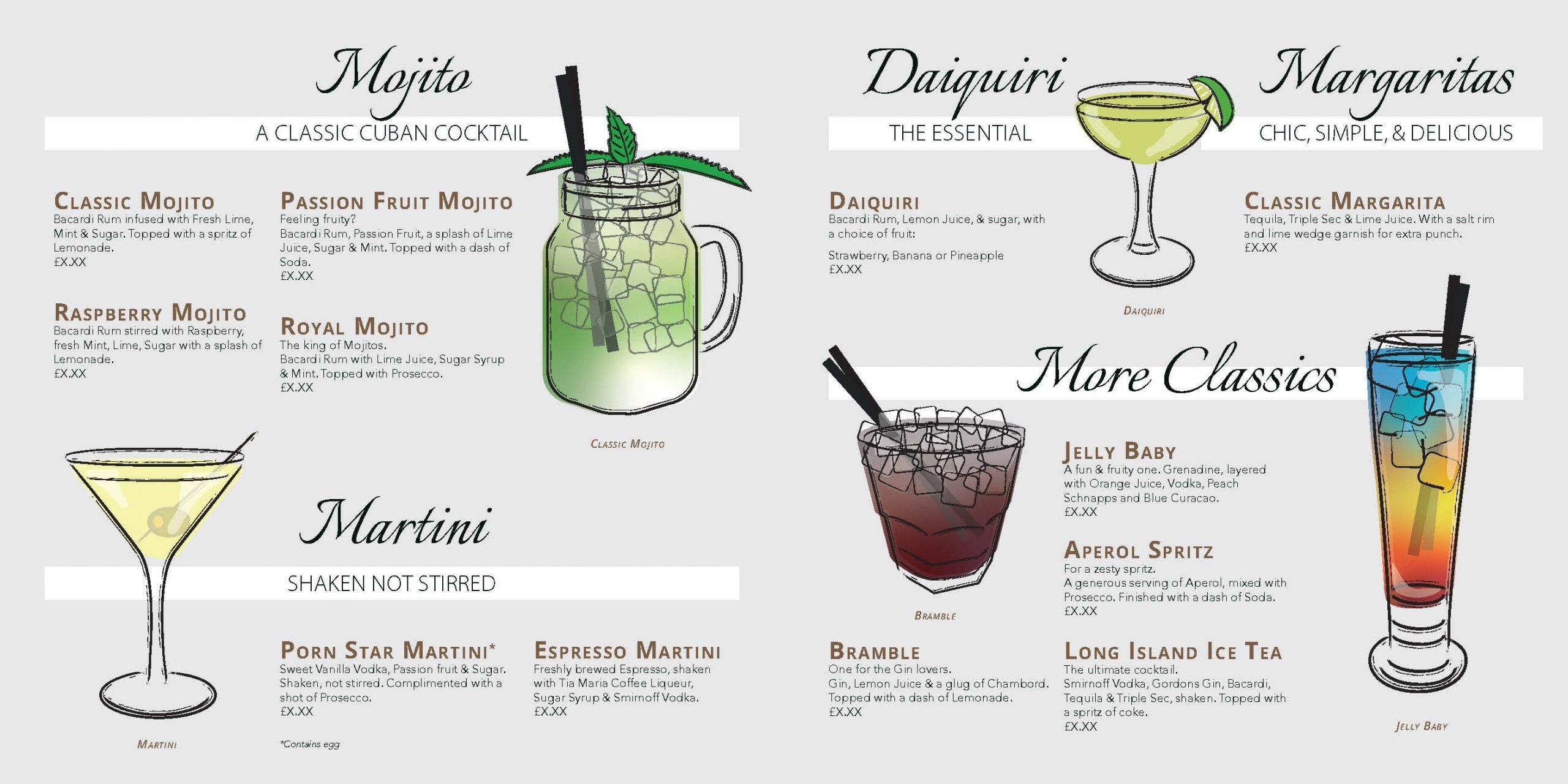

ii) Vector Chalkboard Menu Template:
This menu design template is a beauty in black and white. These menus serve the dual purpose of being a functional decor and also helping the restaurant express its personality while not losing focus of the food.
iii) Halloween Menu:
This menu is an instant attention grabber. Although it is filled with eerie elements, it never fails in attracting more orders. The orange and black background enhance the text and improve legibility.
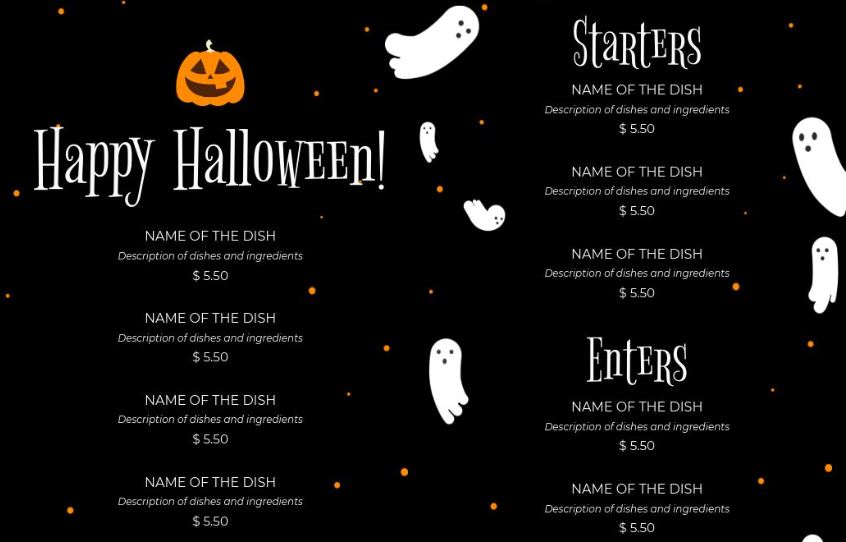
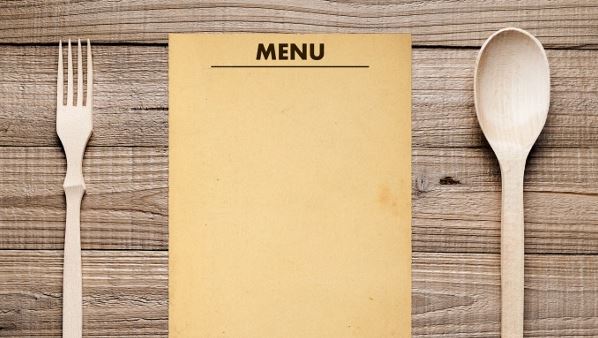
iv) Blank Menu:
A blank menu design template gives absolute freedom to the restaurateur to fill in the space with all the necessary elements and text without leading to a clutter. This template provides ample space for mentioning the name of the cuisine, the ingredients used and also the price.
v) Sandwich Menu:
This menu design template provides instant information to customers who wish to have a quick bite on the go. Bright colors and large images make the sandwich menu attractive to people looking to order and receive food really fast.
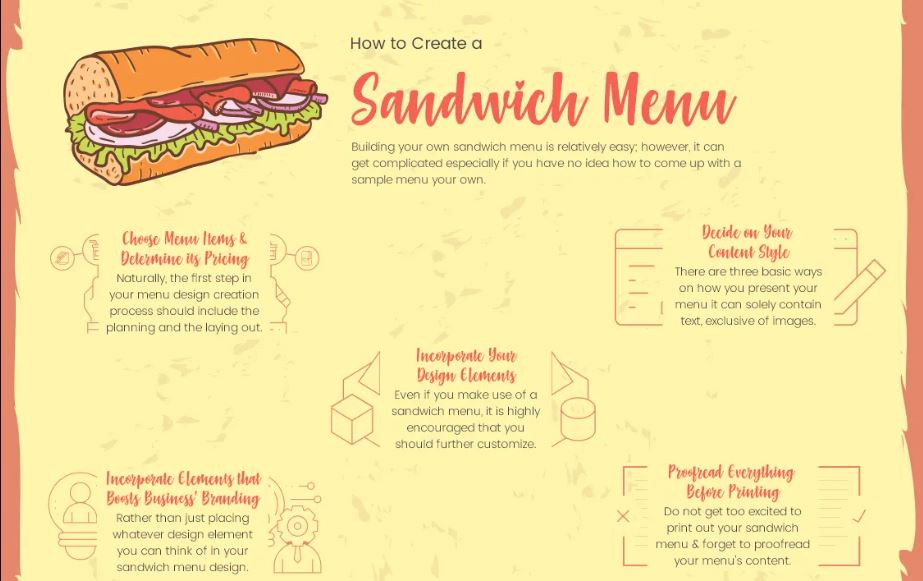
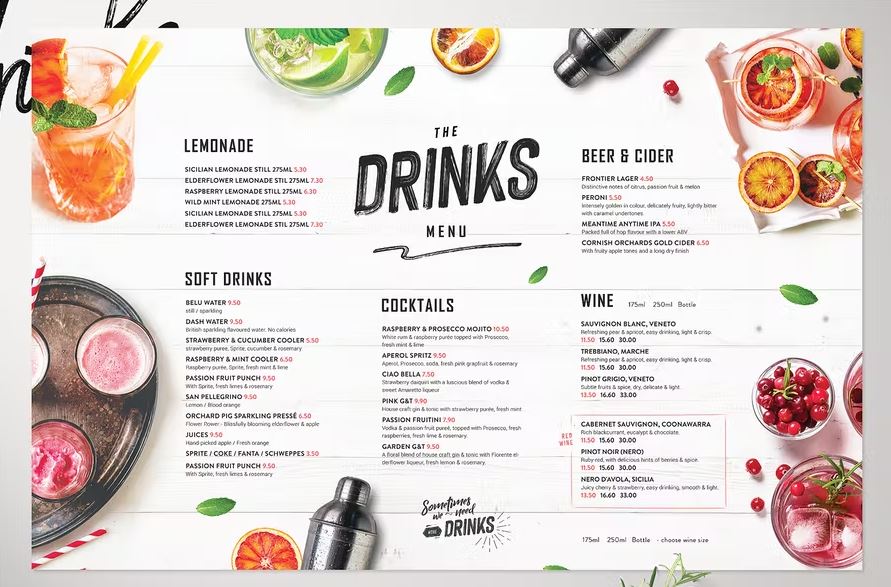
vi) Beverage Menu:
This menu design template allows the use of both images of mouth-watering drinks and their details. Although minimalist in nature, it is loaded with information that helps restaurants serving beverages generate more sales.
vii) Fast Food & Snacks Menu:
This menu design template is traditional all the way. The rustic brown background is customizable. It permits restaurants with a simple, yet effective menu to inform customers about the menu items and their prices. At the bottom, there is also some space left over for restaurants to include their address and contact details.
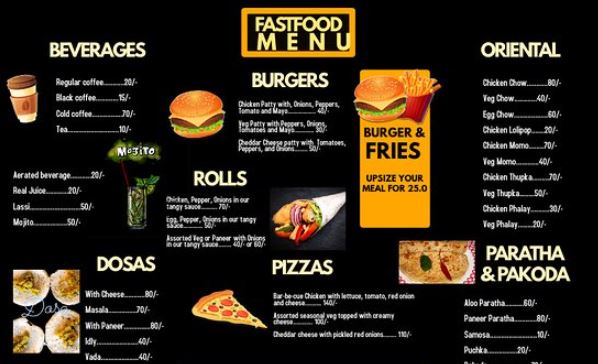
This blog must have been an informative piece. If you are still looking for professional intervention in your restaurant’s digital needs, get in touch with Restaurantify.
LATEST BLOG POST
What Is Happy Hour? 10 Foolproof Ways to Make Your Happy Hour Successful
ShareTweetSharePin0 Shares
What does a hostess do at a restaurant? Duties And Responsibilities
ShareTweetSharePin0 Shares
200 + Cafe Name Ideas That Will Make Your Business Stand Out
ShareTweetSharePin0 Shares
How to Craft an Effective Restaurant Mission Statement: A Step-by-Step Guide
ShareTweetSharePin11 Shares
How to Create Food Truck Business Plan? Complete Guide
ShareTweetSharePin11 Shares
How to Choose the Right Restaurant Name (+ 190 Great Ideas & Examples)
ShareTweetSharePin11 Shares
